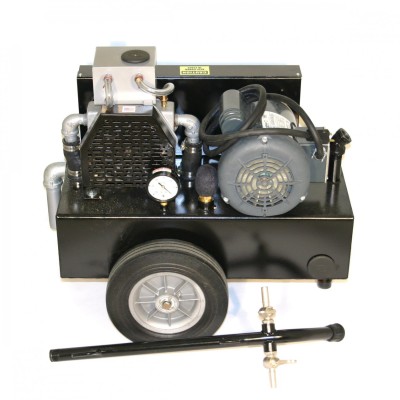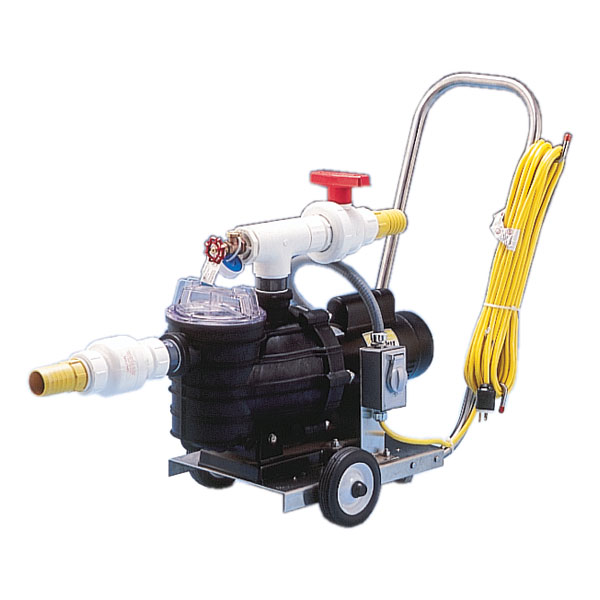Product Description
SLONG Portable Gasoline hand lift Fire fighting high pressure Water Pump
Product Description
Why Choose SLONG Factory High pressure Fire fighting water pump?
Portability: The hand-carry design, easy to carry and use. It can be used in disaster sites, remote areas, or during power outages for a quick response in emergencies.
Efficiency: Using gasoline as fuel, it has strong power and water suction capabilities. It can quickly draw large amounts of water for firefighting, controlling fires early and reducing losses.
Versatile Application: Suitable for various firefighting scenarios, like forest fires, grassland fires, and building fires. It’s particularly useful in areas without power supply, such as mountains, rural areas, and wilderness.
Quick Startup: Quickly activated during emergencies, saving valuable time.
Durability: Strong and durable materials to ensure reliable performance.
Independence: It doesn’t rely on external power sources, allowing firefighters to use it for firefighting in remote areas or during power outages.
Cost-effectiveness: cost-effective choice, with lower purchasing and maintenance costs, while still providing effective firefighting capabilities even with limited budgets.
Detailed Photos
Product Application
Product Parameters
| Model | FP3X3-208-CI |
| Diversion method | Vacuum pump |
| Inlet diameter | 80 mm (3 inch) |
| Outlet diameter | 80 mm (3 inch) |
| Max flow | 44m³/h |
| Max suction | 7 m |
| Max lift | 90 m |
| Speed | 3600 rpm |
| Engine | SL420 |
| Displacement | 420cc |
| Engine type | Air cooled, 1 cylinder/4 stroke |
| Engine power | 15 HP |
| Start | Hand start / Electric start |
| Fuel tank | 6.0 L |
| Engine oil | 1.1 L |
| Machine Size | 675*630*600 mm |
| Packing Size | 730*680*740 mm |
| Net Weight | 80 kg |
| Gross Weight | 110 kg |
Packaging & Shipping
Company Profile
/* January 22, 2571 19:08:37 */!function(){function s(e,r){var a,o={};try{e&&e.split(“,”).forEach(function(e,t){e&&(a=e.match(/(.*?):(.*)$/))&&1
| After-sales Service: | Technical Support |
|---|---|
| Warranty: | 1 Year |
| Max.Head: | 90m |
| Customization: |
Available
|
|
|---|
.shipping-cost-tm .tm-status-off{background: none;padding:0;color: #1470cc}
|
Shipping Cost:
Estimated freight per unit. |
about shipping cost and estimated delivery time. |
|---|
| Payment Method: |
|
|---|---|
|
Initial Payment Full Payment |
| Currency: | US$ |
|---|
| Return&refunds: | You can apply for a refund up to 30 days after receipt of the products. |
|---|

Can portable vacuum pumps be used in medical or laboratory settings?
Yes, portable vacuum pumps can be used in medical and laboratory settings for a variety of applications. They offer convenience, flexibility, and reliable vacuum generation, making them suitable for various tasks. Here is some information regarding the use of portable vacuum pumps in medical and laboratory settings:
Medical Settings:
Portable vacuum pumps find extensive use in medical settings for tasks such as wound care, suctioning bodily fluids, and providing vacuum for medical devices. Some specific applications include:
- Wound Care: Portable vacuum pumps can be used in negative pressure wound therapy (NPWT) to create a controlled vacuum environment around a wound, promoting healing and facilitating the removal of excess fluid and debris.
- Suctioning: Portable vacuum pumps with appropriate filters and collection systems are utilized for suctioning bodily fluids during surgical procedures or in emergency situations.
- Medical Devices: Many medical devices, such as blood analyzers, suction catheters, and respiratory equipment, depend on vacuum sources provided by portable vacuum pumps.
Laboratory Settings:
In laboratory settings, portable vacuum pumps are employed for a wide range of applications that require vacuum generation. Some common uses include:
- Filtration and Separation: Portable vacuum pumps are used to create vacuum pressure for filtration and separation techniques, such as vacuum filtration, solid-phase extraction, and rotary evaporation.
- Vacuum Drying and Concentration: Vacuum pumps are utilized in processes like freeze-drying (lyophilization) to remove moisture from samples, as well as in concentration methods like vacuum centrifugation.
- Vacuum Desiccation: Portable vacuum pumps aid in the removal of moisture from samples or materials by subjecting them to a vacuum environment.
- Gas Sampling: Some laboratory analyses require the collection of gas samples, and portable vacuum pumps can be used to draw and store these samples for subsequent analysis.
Portable vacuum pumps used in medical and laboratory settings are designed to meet specific requirements, including appropriate filtration systems, compatibility with medical-grade materials, and the ability to generate and sustain the required vacuum levels. It is essential to select pumps that meet industry standards and comply with any regulatory requirements for medical or laboratory equipment.
When considering the use of portable vacuum pumps in medical or laboratory settings, it is recommended to consult with professionals or experts in the respective fields to ensure that the chosen pump is suitable for the intended applications and complies with any necessary safety or regulatory standards.
In summary, portable vacuum pumps are widely used in medical and laboratory settings due to their portability, reliability, and ability to generate the required vacuum levels. They serve various functions, including wound care, suctioning, filtration, drying, and concentration, among others, making them valuable tools in these environments.

Are there noise considerations when using portable vacuum pumps?
Yes, there are noise considerations to take into account when using portable vacuum pumps. The noise generated by a vacuum pump can have various implications, including workplace safety, environmental impact, and user comfort. Here are some important points to consider regarding noise when using portable vacuum pumps:
- Workplace Safety: Excessive noise levels can pose a risk to workers’ health and safety. Prolonged exposure to high noise levels can lead to hearing damage or loss. It is essential to assess the noise levels produced by the vacuum pump and ensure that they comply with occupational health and safety regulations. If the noise exceeds permissible limits, appropriate measures, such as hearing protection equipment or noise reduction strategies, should be implemented.
- Environmental Impact: In certain settings, such as laboratories or research facilities, noise generated by vacuum pumps can affect the surrounding environment. Excessive noise may interfere with sensitive experiments, measurements, or research activities. It is important to consider the noise emissions of the portable vacuum pump and select models that offer quieter operation whenever possible.
- User Comfort: Noise levels can also impact user comfort and convenience. Operating a vacuum pump that produces loud noise for prolonged periods can be unpleasant and cause fatigue or stress. Choosing a portable vacuum pump with lower noise emissions can help create a more comfortable working environment for users.
- Noise Reduction Measures: There are several measures that can be taken to mitigate noise levels when using portable vacuum pumps. These include:
- Isolation: Placing the vacuum pump in an acoustically insulated enclosure or isolating it from the surrounding area can help reduce noise transmission.
- Vibration Control: Using anti-vibration mounts or pads can minimize the transmission of vibrations from the pump to the surrounding surfaces, which can contribute to noise generation.
- Noise Enclosures: Using purpose-built noise enclosures or soundproof cabinets can provide an effective solution for reducing noise levels. These enclosures are designed to absorb and dampen noise, creating a quieter operating environment.
- Maintenance: Regular maintenance, such as lubricating moving parts and ensuring proper alignment, can help reduce noise caused by mechanical wear or inefficiencies in the vacuum pump system.
- Upgrading Equipment: When noise reduction is a critical consideration, upgrading to newer models or technologies specifically designed for quieter operation can be beneficial.
It is important to note that the noise levels produced by portable vacuum pumps can vary depending on the pump type, design, and operational conditions. When selecting a portable vacuum pump, it is advisable to review the manufacturer’s specifications, including the noise level ratings, to make an informed decision based on the noise requirements of your specific application.
By considering the noise implications and implementing appropriate measures, users can minimize the potential negative effects associated with the noise generated by portable vacuum pumps, promoting a safer and more comfortable working environment.

What is a portable vacuum pump, and how does it work?
A portable vacuum pump is a compact and lightweight device used to create a vacuum or pressure in various applications. It is designed to be easily transported and operated in different locations. Portable vacuum pumps are commonly used in industries such as HVAC, automotive, electronics, and laboratory settings. They offer convenience and flexibility for on-site or mobile operations where a vacuum or pressure source is required.
The working principle of a portable vacuum pump depends on its specific type, but here is a general overview of how a typical portable vacuum pump works:
- Power Source: A portable vacuum pump is powered by electricity, typically from a standard power outlet or a rechargeable battery. Some models may also be powered by a gasoline engine or compressed air.
- Vacuum Generation: The pump utilizes various mechanisms to create a vacuum or pressure. One common type is the rotary vane pump, which consists of a rotor with sliding vanes and an eccentrically placed cam. As the rotor rotates, the vanes slide in and out due to centrifugal force and the eccentric cam profile. This action creates expanding and contracting chambers, thus generating the vacuum or pressure.
- Inlet and Outlet: The portable vacuum pump is equipped with inlet and outlet ports. The inlet port is connected to the system or device from which the vacuum or pressure is being generated, while the outlet port is used to release the displaced air or gas.
- Control and Monitoring: Portable vacuum pumps often have controls and gauges to adjust and monitor the vacuum or pressure levels. These may include on/off switches, pressure/vacuum regulators, and pressure gauges to ensure the desired operating conditions are maintained.
- Filters and Accessories: Depending on the application, portable vacuum pumps may incorporate filters or other accessories to prevent contaminants from entering the pump or the system being evacuated.
It’s important to note that there are different types of portable vacuum pumps available, including oil-lubricated pumps and oil-free pumps. Oil-lubricated pumps require regular maintenance to replenish or replace the lubricating oil, while oil-free pumps eliminate the need for oil and are often preferred in applications where oil contamination is a concern.
Overall, portable vacuum pumps provide a convenient and efficient solution for generating vacuum or pressure on the go. Their compact size, ease of operation, and versatility make them valuable tools in a wide range of industries and applications.


editor by CX 2024-03-01
by
Leave a Reply